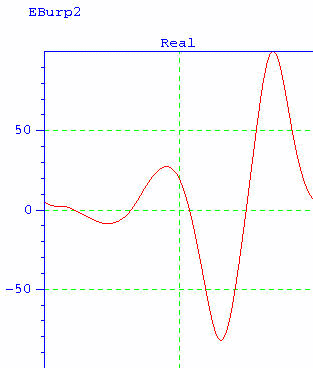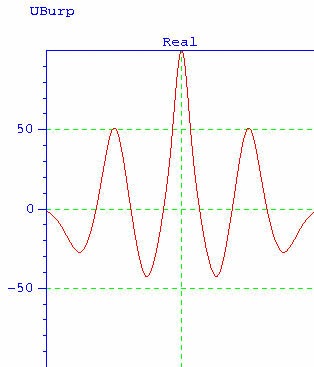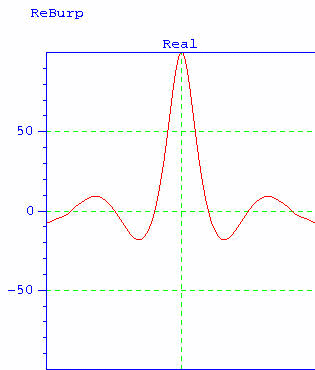|
|
The Band-selective Uniform-Response Pure-phase (BURP) Pulses were proposed to achieve excellent pure, selective, in-phase excitation or inversion of a selected region or a single-resonance. They were designed from a numerical approach based on truncated Fourier series and nowadays are widely used as powerful tools for selective excitation.REQUIREMENTS
BURP shapes can be defined in the SHAPE tool.VERSIONS
Several BURP pulses were proposed ( 89JMR620 and 91JMR93-93 ):EXPERIMENTAL DETAILSInstead of a single low-intensity shaped pulse, one can use a train of regularly spaced hard pulses in the DANTE manner whose flip angles are tailored to the shape of the amplitude-modulation function. The pulse intensity B1 is held constant and the width of successive pulses is varied accordingly (95JMRB153). The relative advantages of Spin-Pinging and DANTE-z schemes when using 180 BURP pulses has been described. The advantage of the DANTE version is that calibration of the nominal flip angle and the setting of the excitation bandwith are totally independent. The calibration of the flip angle depends only on the intensity of the B1 field (a simple calibration of a hard 90 pulse) while the width of the selected region depends only on the total duration of the DANTE train.
- The E-BURP-1 and E-BURP-2 pulses for excitation.


- U-BURP pulse for universal 90 excitation.

- The spin-inversion I-BURP-1 and I-BURP-2 pulses specifically designed to convert Mz into -Mz.


- The time-symmetric RE-BURP pulse specifically designed to induce a 180 rotation whatever the initial condition of the magnetization.

Implementation of DANTE-based BURP pulses in semi-selective SPFGE and DPFGE schemes has been discussed in ( 96MRC807 ).
Improved uniformity can obtained from related shaped BURP pulses as demonstrated for the SNEEZE pulse ( 94JMRA252-110 and 95JMRA134-112 ) and relaxation effects in small molecules can be minimized using SLURP pulses ( 94JMRA113-107 ).
A modified but similar approach has been used to design improved selective BURP pulses ( 98JMR223-134 ).
More details in Tutorial: Defining BURP Shapes.PROFILE
A) E-BURP2 shaped pulse as a excitation element:
Reviews on shaped rf pulses ( 98PROG59 ).